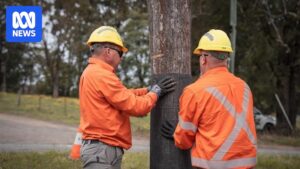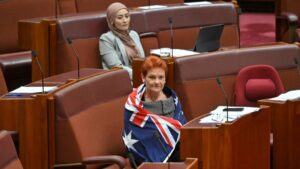
The University of Melbourne’s latest Household, Income and Labour Dynamics in Australia (HILDA) survey reveals a concerning decline in Australian living standards. The survey indicates that households now have less disposable income than they did before the pandemic, highlighting a significant economic shift.
According to the survey, the mean annual household disposable income has decreased below 2020 levels, settling at $116,432. This decline is compounded by rising costs in essential areas such as childcare, rent, and mortgage payments, which have surged compared to two decades ago.
Income and Housing: A Complex Relationship
While the median household disposable income remains slightly better, falling to around 2020 levels, it has shown minimal growth since 2009. This stagnation in income growth, juxtaposed with escalating living costs, paints a challenging picture for many Australian households.
The survey further reveals that, when adjusted for inflation, households in 2023 are spending an average of 40.5% more on rent than they did in 2006. This trend suggests a looming crisis, with predictions that nearly a quarter of retirees could be renters by 2043, a significant increase from 12% in 2023 and 6% in 2003.
Expert Insights on Housing Shortages
Dr. Kyle Peyton, a senior research fellow at the Melbourne Institute of Applied Economic and Social Research, expressed concerns over the country’s housing supply. “As a country, we’re not prepared for what’s coming,” Peyton stated. “We’re not building enough homes to keep up with population growth, and we haven’t been doing that for many years.”
“We need to build more homes. We’re currently building … 170,000 homes a year. That’s frankly pathetic. We’re never going to get out of this situation if that’s all we can do.”
Peyton further emphasized the need for policy changes, suggesting, “You’ve got to make it legal to build things. We need to have a conversation about how much we really value the derelict pub down the road with a heritage overlay.”
Population Growth and Housing Demand
The discussion around housing shortages often intersects with debates on immigration. Australia’s population growth, driven primarily by net overseas migration, has outpaced the nation’s capacity to build housing and infrastructure. This imbalance has exacerbated the rental crisis, as demand for housing continues to outstrip supply.
Critics argue that slowing population growth by moderating immigration could alleviate some of the pressure on the housing market. They point out that despite the obvious supply and demand dynamics, policymakers have yet to address the root causes effectively.
“If we are not building enough homes to keep up with extreme levels of population growth, then the easiest, fastest, and most sensible solution is to slow population growth by moderating immigration. It is basic economics and common sense.”
Looking Ahead: Policy Implications
The findings of the HILDA survey underscore the urgent need for comprehensive policy reforms. Addressing the housing shortage requires not only increasing the construction of new homes but also re-evaluating immigration policies to ensure sustainable population growth.
As Australia grapples with these challenges, the conversation around living standards, housing, and economic policy will likely continue to evolve. Policymakers, economists, and the public must engage in meaningful dialogue to navigate these complex issues and secure a stable future for all Australians.
The path forward will require balancing growth with sustainability, ensuring that the nation’s infrastructure can support its population without compromising living standards. As the debate unfolds, the focus will remain on finding effective solutions that align with both economic realities and social needs.







